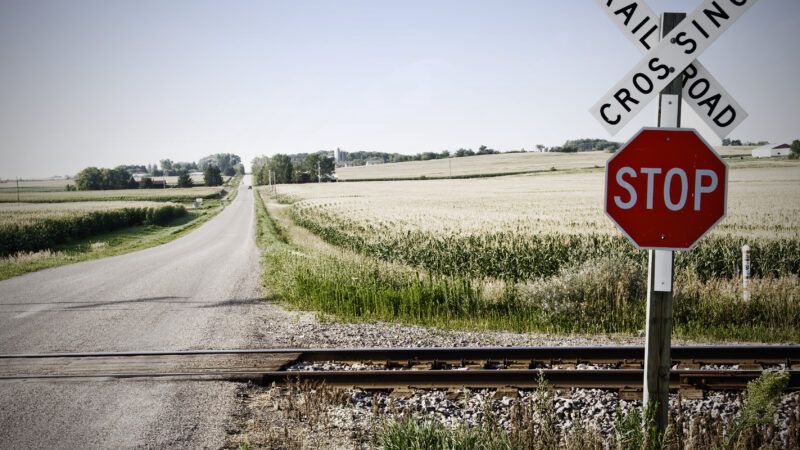Fatal Amtrak Crash a Reminder of Congress' Misaligned Rail Safety Priorities
Railroads spent a decade and billions of dollars fulfilling a costly federal mandate, at the expense of addressing less eye-catching causes of rail-related deaths.

The latest Amtrak crash near Mendon, Missouri, that left four dead and many more injured contains a tragic lesson about Congress' misaligned rail safety priorities.
The accident occurred yesterday when an eight-car passenger train traveling from Los Angeles to Chicago derailed at a grade crossing after striking a truck that was obstructing the tracks. Three passengers and the driver of the truck died, and 150 were taken to nearby hospitals.
The grade crossing was "uncontrolled," meaning that it had no crossing guard arms, warning lights, or other safety features that are typically employed to prevent accidents at road-rail intersections. Accidents at grade crossings are a large portion of rail-related deaths.
According to safety data from the Federal Railroad Administration (FRA), 236 of the 896 rail-related fatalities in 2021 happened at highway grade crossings. Of those, 33 involved Amtrak trains. The vast bulk of the other deaths involved trespassers on railroad property getting struck by trains. There were also 168 suicides by rail in 2021, which the FRA reports separately.
This particular grade crossing has apparently been on the radar of both state officials (who had a plan to install safety improvements) and neighbors. In the wake of yesterday's accident, one farmer who lives close to the crossing complained to local media about the lack of safety features and the steep climbs that made it hard to see down the tracks.
Despite the frequency of fatal grade-crossing incidents, the major rail safety push over the past decade has been to prevent train-on-train collisions, high-speed derailments, and other exceedingly rare high-casualty events.
In September 2008, a passenger train in California collided with a Union Pacific freight train, killing 25 people and injuring 135.
A month later, Congress passed the Rail Safety Improvement Act that mandated railroads adopt Positive Train Control (PTC), an expensive suite of automation and communications technology that can automatically slow speeding trains down.
A common feature of federal safety legislation is that it adopts a very expensive solution to solving the last, most media-salient incident while ignoring more modest safety improvements that could prevent the more ordinary tragedies that capture less attention.
The PTC mandate was no exception.
It cost railroads an estimated $14 billion (about $2 billion of which was covered by federal grants and loans) over a decade [OK?] to comply with the PTC mandate, which was eventually fulfilled in 2020. The cost-benefit analysis of positive train control has never looked favorable.
The FRA estimated that the technology would provide about $90 million in safety benefits each year while costing $850 million to maintain. An earlier estimate by the agency found that it would have prevented seven fatalities over the course of a decade. (The infrastructure law passed by Congress last year does, to its credit, create a grant program to help pay for much-needed grade crossing removals, which probably should have been prioritized sooner.)
That the money spent on PTC provided little return in terms of safety improvements is only one problem with the mandate. Each dollar that went to the technology was one that couldn't have been spent on more efficacious safety improvements.
According to local ABC affiliate KMBC, Missouri officials estimated the costs of improving the Mendon crossing at $400,000. So it's possible it could have been improved long ago but for an expensive PTC mandate.
